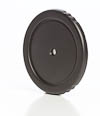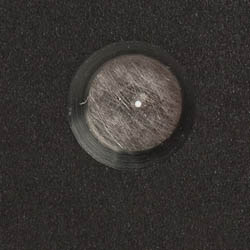
| Finney Pin-Hole lens - Photography of the ancients | |
|---|---|
Pinhole diameter: .011" |
 |
In the 10th century AD, noted Muslim physicist ibn al-Haytham (or Alhazen), observed the effect of image projection through small holes onto an opposing surface, and through experimentation, created the camera-obscura. This discovery was not new, as this phenomenon was first explained by the ancient chinese philosopher Mo-Di (470BC-390BC). However, it was Alhazen whom created the first physical prototype, which was significant towards the invention of the camera. The Finny PinHole body cap is a nifty tool that follows the same principles of that ancient device, but in a convenient package. Sure, I could have made my own using a needle and a spare lens cap, but hitting .011" would have been hit or miss.
There are pros and cons to pinhole lenses, at .011", the aperture is equivalent to f/180, and with such a deep field of view, everything in the scene is in focus, however, it's extremely dark and requires a lot of light and time to obtain an exposure. Likewise, it creates an image with lots of character.. that is, it's not really sharp at all. Other than creating some images of artistic merit, it's nothing more than a fun experiment. In regards to the latter, it's interesting to gain a real understanding of the kinds of photography the ancients were seeing, and to only image their delight in witnessing such effects. Back then these were serious tools for copy artists and scientist.
|
|




